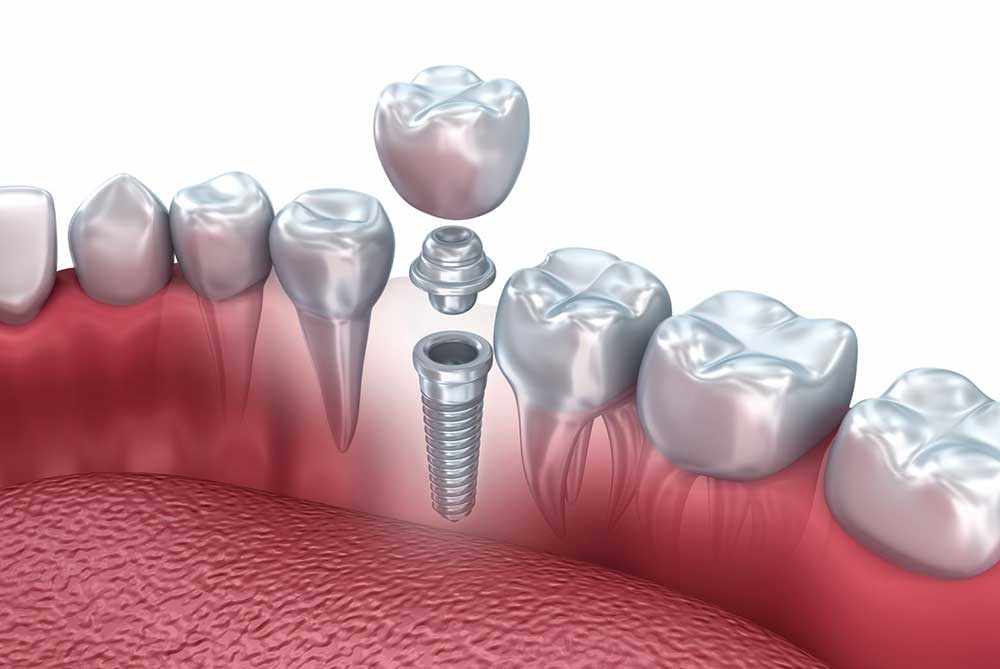

In cases where the patients have one or more missing teeth, it is not possible to bridge the gap by orthodontic treatments. Once having the teeth aligned, the orthodontist then uses dental implants to fill the gaps and replace lost teeth. Note that the orthodontist first aligns the teeth around the gap by orthodontic treatments and then performs dental implant surgery. If done in the wrong order, not only will it reduce the success rate of the dental implant but it also will ruin the patient’s preferred tooth alignment.


As mentioned earlier, dental implant surgery is usually performed for patients who have several missing teeth. When orthodontic treatments alone cannot align your crooked or malpositioned teeth and fill your missing teeth, dental implant surgery is a procedure that can completely solve your problem. Other advantages of this procedure are as follows:
It is obvious that dental implants or dentures cannot completely replace natural teeth. However, when you lose some of your natural teeth for any reason, you need to somehow replace them to maintain the health of gums and the remaining teeth. In cases where the orthodontist decides to perform orthodontics treatments and dental implant surgery simultaneously, the following disadvantages can be overlooked:
Patients who have one or more missing teeth from birth are typically good candidates for a treatment plan combining orthodontics with dental implant surgery. For example, patients with cleft lip and cleft palate usually have one or more missing teeth from birth. Such patients should visit an orthodontist after the treatment of cleft lip and cleft palate. The orthodontist will first align the teeth and then performs dental implant surgery to replace the missing teeth.
Those who have lost their natural tooth forever as a result of an accident are also among the good candidates for this combinative treatment. Such patients are also recommended to visit an orthodontist to first align their teeth and then replace the missing teeth with dental implants. It is noteworthy that minor gaps between teeth can be corrected only by orthodontic treatments without the need for dental implants.
In some cases, highly skilled and experienced orthodontists can even bridge major gaps between teeth only by orthodontic treatments without the need for dental implants. The following figure is related to a patient with two missing maxillary teeth from birth; the gap between teeth was bridged only by orthodontic treatments, and there was no need for dental implant surgery.
After installing orthodontic brackets on the teeth, patients may experience discomfort in their teeth or…
Orthodontic brackets are intended to help correct dental and oral abnormalities; however, their efficacy relies…
The last teeth to erupt, wisdom teeth, occasionally fail to emerge and end up fully…
Orthodontic O-rings are small elastic bands that wrap around orthodontic brackets to hold the orthodontic…
The most important question people have before starting treatment for dental braces is how long…
Artificial intelligence in dentistry refers to the use of advanced algorithms and techniques to analyze…